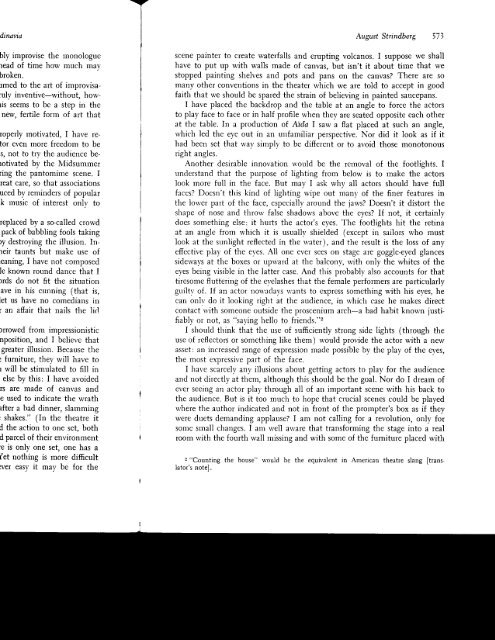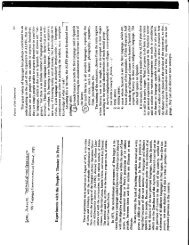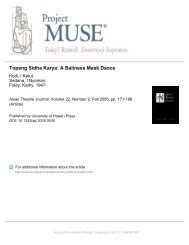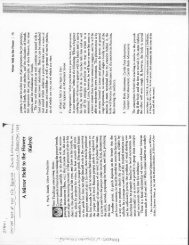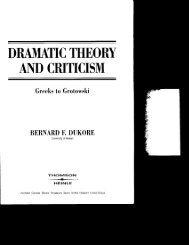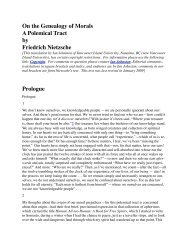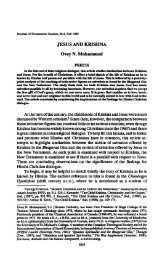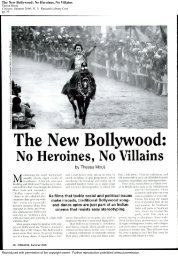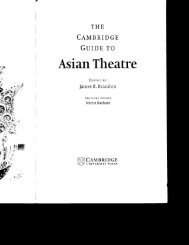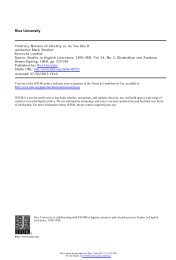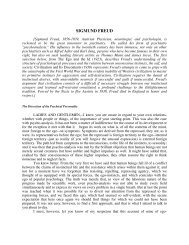Preface to Miss Julie - Yavanika
Preface to Miss Julie - Yavanika
Preface to Miss Julie - Yavanika
Create successful ePaper yourself
Turn your PDF publications into a flip-book with our unique Google optimized e-Paper software.
dtndyta<br />
August Strindbery 577<br />
bly improvise the monologue<br />
read of time how much mav<br />
broken.<br />
rrned <strong>to</strong> the art of improvisa-<br />
:uly inventive-without, howris<br />
seems <strong>to</strong> be a step in the<br />
new, fertile form of art that<br />
roperly motivated, I have re<strong>to</strong>r<br />
even more freedom <strong>to</strong> be<br />
s, not <strong>to</strong> try the audience berotivated<br />
by the Midsummer<br />
ring the pan<strong>to</strong>min-re scene. I<br />
reat care, so that associations<br />
uced by reminders of popular<br />
k music of interest onl1, <strong>to</strong><br />
replaced by a so-called crowd<br />
pack of babbling fools taking<br />
ry destroving the illusion. In-<br />
-reir taunts but make use of<br />
Leaning, I have not ccmposed<br />
le known round dance that I<br />
lrds do not fit the situation<br />
ave in his cunning (that is,<br />
let us have no comedians in<br />
r an affair that nails the licl<br />
rrrowed from impressionistic<br />
nposition, and I believe that<br />
greater illusion. Because the<br />
: furniture, thel,will have <strong>to</strong><br />
r will be stimulated <strong>to</strong> fill in<br />
else by this: I have avoided<br />
rs are made of canvas and<br />
e used <strong>to</strong> indicate the wrath<br />
rfter a bad dinner, slarnming<br />
: shakes." (In the theatre it<br />
C the action <strong>to</strong> one set, both<br />
il parcel of their environment<br />
:e is only one set, one has a<br />
fet nothing is more difficult<br />
)ver easy it may be for the<br />
scene painter <strong>to</strong> create waterfalls and erupting volcanos. I suppose we shall<br />
have <strong>to</strong> put up with walls made of canvas, but isn't it about time that we<br />
s<strong>to</strong>pped painting shelves and pots and pans on the canvas? There are so<br />
many otl-rer conventions in the theater which we are <strong>to</strong>ld <strong>to</strong> accept in good<br />
faith that we should be spared the strain of believing in painted saucepans.<br />
I have placed the backdrop and the table at an angle <strong>to</strong> force the ac<strong>to</strong>rs<br />
<strong>to</strong> play face <strong>to</strong> face or in half profile when they are seated opposite each other<br />
at the table. In a production of Aida I saw a flat placed at such an angle,<br />
rvhich led the eye out in an unfarniliar perspective. Nor did it look as if it<br />
had been set that u,ay simply <strong>to</strong> be different or <strong>to</strong> avoid those mono<strong>to</strong>nous<br />
right angles.<br />
Another desirable innovation u'ould be the removal of the footlights. I<br />
understand that the purpose of lighting from below is <strong>to</strong> make the ac<strong>to</strong>rs<br />
look more full in the face. But may I ask why all ac<strong>to</strong>rs should have full<br />
faces? Doesn't this kind of lighting wipe out rnanl' of the finer features in<br />
the lorver part of the face, especially around the laws? Doesn't it dis<strong>to</strong>rt the<br />
shape of nose and throrv false shadows above the eyes? If not, it certainly<br />
does something else: it hurts the ac<strong>to</strong>r's eyes. The footlights hit the retina<br />
at an angle fron-r which it is usuallv shielded (except in sailors who must<br />
look at the sunlight reflected in the u,ater), and the result is the loss of any<br />
efiective play' of the eves. All one ever sees on stage are goggle-eyed glances<br />
sidervays at the boxes or upward at the balconv, r,vith only the rvhites of the<br />
eves being visible in the latter case. And this probabiy also accounts for that<br />
tiresome fluttering of the evelashes that the female p.rfor-"r, are particularly<br />
guiltl'of. If an ac<strong>to</strong>r nou'adavs u'ants <strong>to</strong> express something with his eyes, he<br />
can onlv do it looking right at the audience, in rvhich case he makes direct<br />
contact rvith someone outside the proscenium arch-a bad habit known justifiably<br />
or not, as "saving hello <strong>to</strong> friends."2<br />
I should think that the use of sufficiently strong side lights (through the<br />
use of reflec<strong>to</strong>rs or something like them) would provide the ac<strong>to</strong>r with a new<br />
asset: an increased range of expression made possible by the play of the eyes,<br />
the most expressive part of the face.<br />
I have scarcelv anv illusions about getting ac<strong>to</strong>rs <strong>to</strong> play for the audience<br />
and not directly at them, although this should be the goal. Nor do I dream of<br />
ever seeing an ac<strong>to</strong>r pla1, through all of an important scene with his back <strong>to</strong><br />
the audience. But is it <strong>to</strong>o much <strong>to</strong> hope that crucial scenes could be played<br />
where the author indicated and not in front of the prornpter's box as if they<br />
were duets demanding applause? I am not calling for a revolution, only for<br />
some small cl.ranges. I am u,ell aware that transforming the stage in<strong>to</strong> a real<br />
room with the fourth wall missine and with some of the furniture nlaced with<br />
z "Counting the house" would be the equivalent in Arnerican theatre slang ftransla<strong>to</strong>r's<br />
note].


